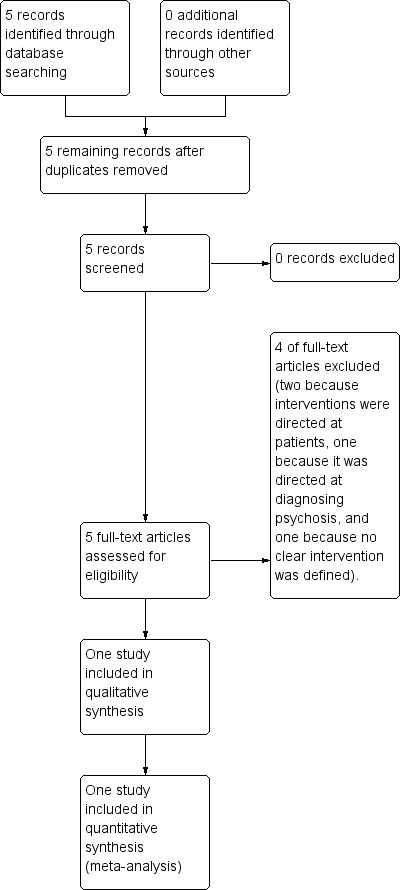Contenido relacionado
Revisiones y protocolos relacionados
Jacqueline Sin, Cheryl D Jordan, Elizabeth A Barley, Claire Henderson, Ian Norman | 8 mayo 2015
Maritta Välimäki, Heli Hätönen, Mari Lahti, Lauri Kuosmanen, Clive E Adams | 17 octubre 2012
Steve R Kisely, Leslie A Campbell, Richard O'Reilly | 17 marzo 2017
Ghazaleh Aali, Timothy Kariotis, Farhad Shokraneh | 8 mayo 2020
Leslie Anne Campbell, Steve R Kisely | 21 enero 2009
Siobhan Reilly, Charley Hobson-Merrett, Bliss Gibbons, Ben Jones, Debra Richards, Humera Plappert, John Gibson, Maria Green, Linda Gask, Peter J Huxley, Benjamin G Druss, Claire L Planner | 7 mayo 2024
Simone Farrelly, Gill E Brown, Clare Flach, Elizabeth Barley, Richard Laugharne, Claire Henderson | 5 octubre 2013
Maritta Välimäki, Heli M Hätönen, Mari E Lahti, Marjo Kurki, Anja Hottinen, Kiki Metsäranta, Tanja Riihimäki, Clive E Adams | 8 octubre 2014
Kaisa Kauppi, Maritta Välimäki, Heli M Hätönen, Lauri M Kuosmanen, Katja Warwick‐Smith, Clive E Adams | 17 junio 2014
Henk S Temmingh, Taryn Williams, Nandi Siegfried, Dan J Stein | 22 enero 2018










